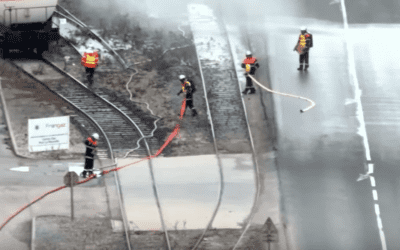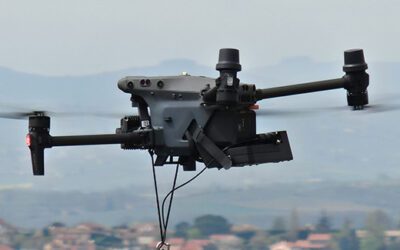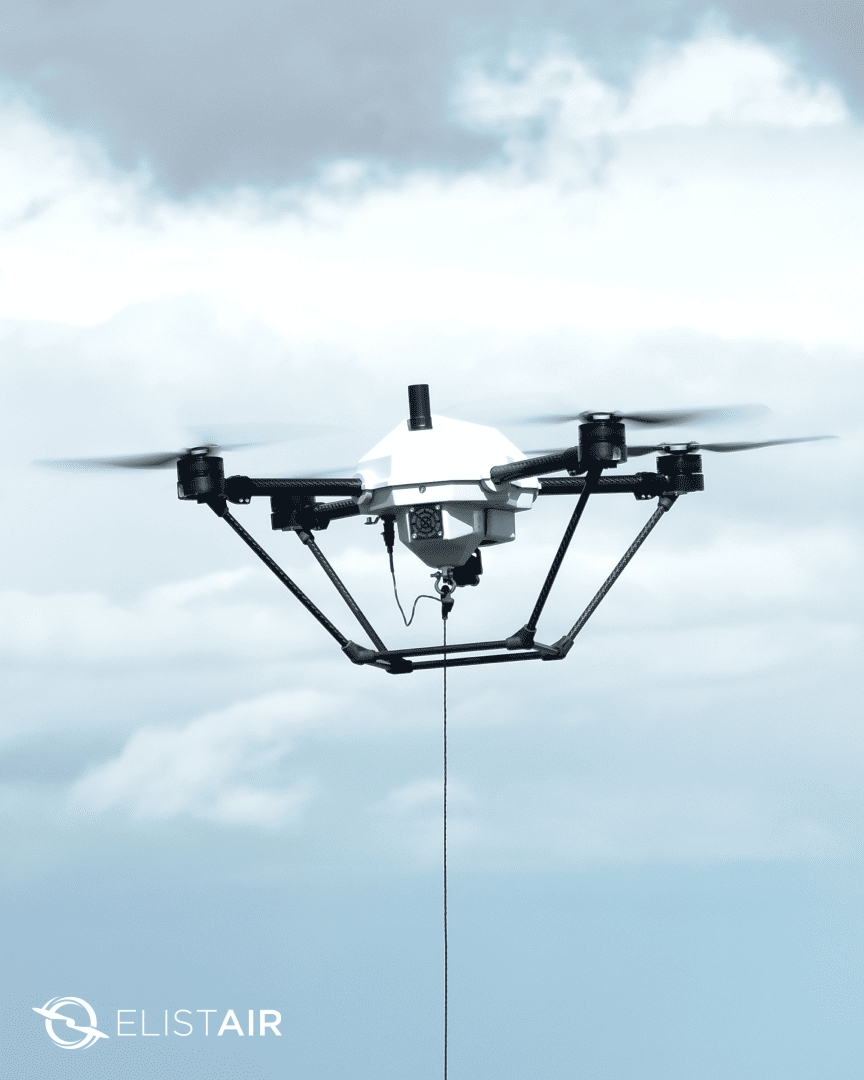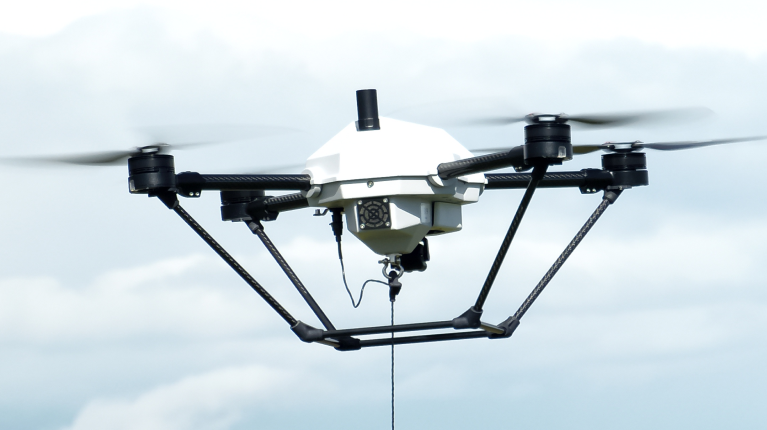Comment lancer avec succès un programme de drones pour les forces de l'ordre ?
L'équipe Elistair
5 minutes
Unmanned aircraft systems (UAS), or drones, are rapidly becoming a valuable tool for law enforcement agencies. They provide real-time situational awareness, enhance officer safety, and improve response times. However, launching a drone program requires careful planning, budgeting, and legal compliance. In this article, we will outline the key steps to launch a successful drone program for your police department.
Definition of Objectives, and Planning
Before launching a drone program, police departments should clearly define their objectives and identify the most effective use cases for drones in their department. Some common use cases include events surveillance, traffic monitoring, and search and rescue operations. By identifying the intended use cases, police departments can select the most appropriate equipment and develop effective training programs.
Funding Your Drone Program
Launching a drone program requires significant investment in hardware, software, and ongoing training and maintenance costs. Police departments can explore different funding options, such as:
● Federal and State Grants: There are several federal and state grants available for police departments seeking to acquire drones. The Department of Justice, for example, has offered grants for police departments seeking to purchase drones for search and rescue, disaster response, and other law enforcement purposes.
● Personal, corporate and association donations: Police departments can also seek private funding from individuals, corporations and associations interested in supporting public safety initiatives. Some police departments have successfully used crowdfunding platforms to raise funds for their drone programs.
● Partnerships: Police departments can partner with other departments or organizations, such as fire departments, search and rescue teams, or universities, to share the costs of acquiring and operating drones. Police departments can also seek partnerships with private companies to fund their drone program.
Choosing the Right Equipment
Police departments should select equipment that meets their specific operational needs, budget, and regulatory requirements. Some key factors to consider include flight time, range, speed, maneuverability, and payload capabilities. Police departments should also choose equipment that is durable, reliable, and easy to maintain.
Here are some of the key hardware sections to consider:
● Airframes: The airframe should be selected based on the intended use case. Vertical takeoff and landing drones are easier to use in urban environments, where fixed wing aircraft are more adapted to long-distance intel gathering.
● Payloads: Depending on your targeted use cases, payload options include high-definition cameras, thermal imaging cameras, lighting systems, loudspeakers or radios.
● Batteries: High-quality batteries are critical to ensure the drone can remain airborne for a sufficient period of time. Batteries are costly and wear rapidly, they require strict lifecycle management and controlled storage conditions.
● Tethering Kits: Tethering kits are useful for long-duration surveillance missions, such as event surveillance or traffic monitoring, as they allow the drone to remain airborne indefinitely by providing a constant power source. A key aspect is to ensure that your tether kit will accommodate a large number of different drones. We (Elistair) have been providing police forces with our tethering kits since 2014.
● Dedicated Vehicle: Having a dedicated vehicle to transport and charge the drone equipment, host the drone and camera operators during long missions or harsh weather, can greatly improve the efficiency of the mission.
● Live Streamers: A live streamer allows the drone team to stream live video and audio to a remote location. This is a key point for police forces to be able to give live intel to their commanders to help them gain situation awareness and improve their decision making ability.
Choosing your hardware partners is key as you will need support to maintain your equipment fully operational in the long run. Select companies that have a mature product line, and strong customer support.
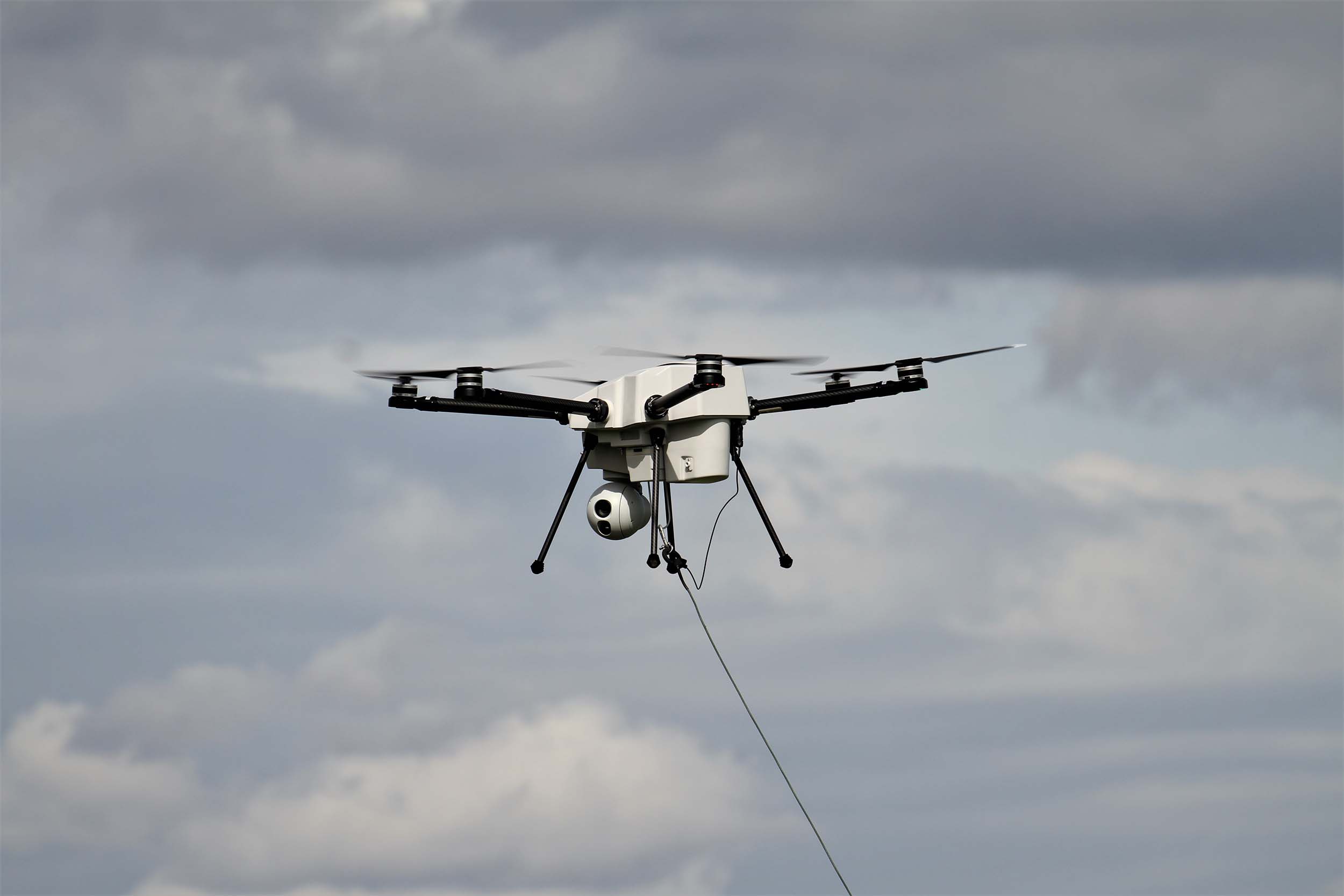
Choosing the Right Complementary Tool
Once the drone has been chosen, you will have to choose complementary tools to help you accomplish the mission. The drone by itself is very limited, and so complementary tools are an effective way to improve it’s capabilities and comply with any local UAS regulations. It can be certain hardware, such as add-ons you can add to the drone. Or it can be software, such as programs to help you analyze images or data.
Some local UAS regulations can also require you to comply with strict rules to fly into urban environments, such as requiring a parachute, or Remote ID broadcast capabilities.
Here are some of the most common complementary tools used by drone units:
● Software for images analysis like “Data From Sky”, “Kestrel”, etc. These software additions will use the video feed from your drone to give you a technical layer of data. Detecting people, counting vehicles, or identifying moving objects. The integrated artificial intelligence (AI) can help operators become more efficient and effective.
● Software for fleet management: it will help you prepare your flights plan, flight authorizations, and help track battery and other equipment maintenance for your fleet.
● Software for thermal or photogrammetry reconstruction: If you want to create 3D models, you will want a photogrammetry software to reconstruct the scene. This type of software can be expensive and your operators will also need specialized training to use them.
● Payload for the drone: what do you want to use your drone for? Is a camera enough? If not, you can add lights, speakers, or object delivery systems.vLarger drones will be able to carry heavier payloads.
● Add-on drone equipment to improve the drone’s capabilities: Extra batteries or tether kits, are ways to improve flight times for a drone and allow to do mission that could be first impossible.
● Add-on drone equipment to comply with local UAS regulations: Some countries forbid the use of drones into cities without a parachute equipped. It is, however, possible to add one as an add-on. In order to fully comply, the attached parachute requires a specific, separate remote to be as safe as possible.
● Complementary equipment kit for live stream or communications: Many law enforcement agencies require that the video feed from their drones is routed to the Command Center. To do so, you will need broadcast equipment able to take the video feed and securely transmit it to another screen or smartphone.
Setting up Drone Training Programs
Successful drone programs require well-trained personnel. Police departments should develop comprehensive training programs that cover not only flight operations, but also data processing, analysis, and privacy considerations.
Training should be ongoing to ensure that personnel stay up-to-date with the latest hardware and software capabilities, as well as regulatory changes.
1. First your operators will have to obtain a drone pilot license in your country. In the US the mandatory certification is the FAA Part 107 Remote Pilot Certificate.
2. Your operators will have to follow a training regimen on each kind of drone system they will use, those trainings can be taught directly by the drone manufacturer.
3. They will have to keep their flight currency up to date through regular training.
Legal and Regulatory Requirements for Drone Programs
Police departments must comply with federal and state regulations when operating drones. The Federal Aviation Administration (FAA) regulates drone operations in the US and requires police departments to obtain a Certificate of Authorization (COA) or waiver to operate drones for law enforcement purposes. Police departments must also comply with privacy laws and regulations, and establish clear policies and procedures for data collection, retention, and dissemination.
Manage Public Perception and Transparency
Police departments must proactively manage public perceptions and ensure transparency in drone operations. By engaging with the community and providing clear and consistent communication about the purpose and use of drones, police departments can build trust and credibility.
Measure the Drone Program’s Success
To evaluate the effectiveness of a drone program, police departments should establish clear metrics and measure success against these metrics. Metrics can include reduced response times, improved situational awareness, or enhanced officer safety.
By tracking progress and making data-driven decisions, police departments can continuously improve their drone programs and ensure they are providing maximum value to the community. Feedback from the drone team’s operators are also important to always improve and help diminish the risk of failure during flight operations.
By following these key steps, police departments can launch a successful drone program to enhance public safety and provide valuable situational awareness.



